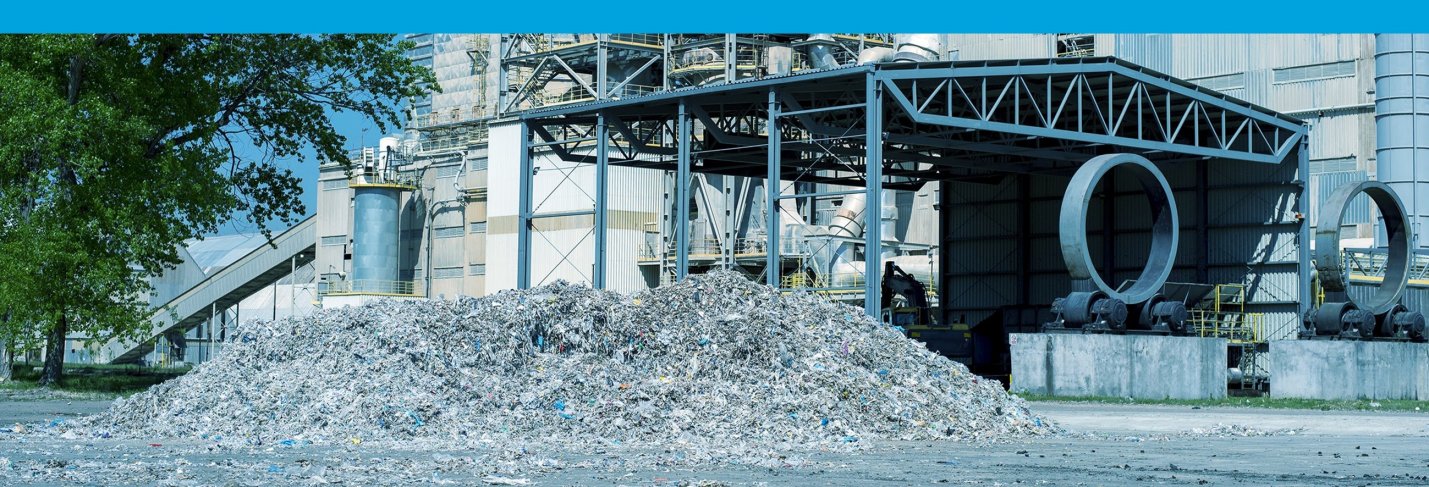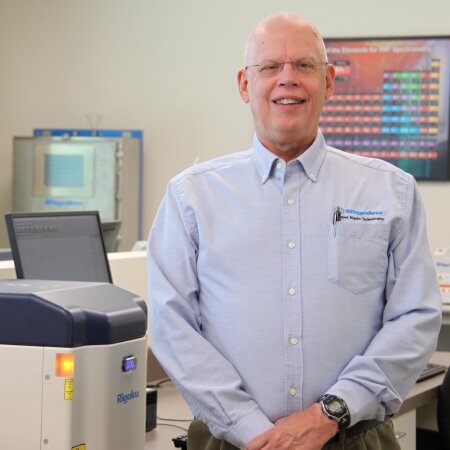Application Note EDXRF1984

Scope
The measurement of chlorine (Cl), lead (Pb), and metals is demonstrated using standardless semi-quant fundamental parameters for the general screening of refuse derived fuel (RDF).
Background
Refuse derived fuel (RDF) is non-hazardous industrial and packaging waste that cannot be recycled, and is comprised of plastics, paper, textiles, rubber, and wood. The material is cleaned using mechanical and biological treatments, crushed, and sorted to extract the PVC and metal impurities. RDF can safely be used as an alternative fuel source instead of fossil fuels in rotary kilns at lime works and cement plants. Prior for use in the kiln, the RDF is quickly checked to ensure chlorine (Cl) is below local limits to be safely burned, and other metals can be checked, such as lead, to ensure the RDF has no high levels of metals, as well. For QA/QC screening at the RDF production facility and the cement and lime plant, Rigaku offers a full line of EDXRF analyzers ideal for fast screening and spot checking RDF prior to use at the kiln. NEX QC+ QuantEZ is demonstrated here for the measurement of Cl, Pb, and general characterization of metal content without the need for assayed reference material, making the Rigaku EDXRF tool ideal for use by non-technical personnel and lab technicians alike.
Measurement methodology
Screening for Cl and spikes in metal concentrations without the need for any assayed reference standards is achieved using Rigaku RPF-SQX Fundamental Parameters (FP) software and powder template. This combination automatically calculates the amount of background to subtract and deconvolutes any peak overlaps. The resulting X-ray intensities from each element can then be used to automatically calculate semi-quant concentration results.
Semi-quant results — RDF fluff
To demonstrate typical analysis performance, two RDF fluff samples were measured.
| Sample ID: RDF Fluff High Cl Units: ppm |
||
| Element | Result | Stat. error |
| Cl | 6690 | 9.2 |
| Pb | 151 | 1.0 |
| Br | 155 | 0.6 |
| Cr | 291 | 5.5 |
| Cd | ND | 0.5 |
| Si | 33500 | 81 |
| S | 5300 | 12 |
| K | 4000 | 80 |
| Ca | 44500 | 157 |
| Ti | 3770 | 31 |
| V | 259 | 10 |
| Mn | 351 | 4.7 |
| Fe | 6570 | 16 |
| Ni | ND | 2.4 |
| Cu | 40.7 | 1.8 |
| Zn | 2600 | 4.8 |
| As | 4.9 | 0.5 |
| Se | 5.6 | 0.1 |
| Rb | 15 | 0.2 |
| Sr | 112 | 0.4 |
| Y | 8.3 | 0.2 |
| Ag | 9.4 | 0.4 |
| Mo | 4.2 | 0.6 |
| Sn | 8.5 | 0.6 |
| Sb | 45 | 0.8 |
| Ba | 233 | 2.6 |
| O | 891000 | Balance |
| Sample ID: RDF Fluff Low Cl Units: ppm |
||
| Element | Result | Stat. error |
| Cl | 418 | 3.1 |
| Pb | 11 | 0.2 |
| Br | 16 | 0.1 |
| Cr | 186 | 3.5 |
| Cd | ND | 0.3 |
| Si | 7570 | 36 |
| S | 722 | 5.1 |
| K | 865 | 40 |
| Ca | 20000 | 91 |
| Ti | 1860 | 17 |
| V | 186 | 6 |
| Mn | 63 | 1.8 |
| Fe | 434 | 3.6 |
| Ni | ND | 1.2 |
| Cu | ND | 0.6 |
| Zn | 136 | 1.0 |
| As | 2.7 | 0.1 |
| Se | 1.8 | 0.1 |
| Rb | 1.8 | 0.1 |
| Sr | 42 | 0.2 |
| Y | ND | 0.1 |
| Mo | ND | 0.3 |
| Ag | ND | 0.2 |
| Sn | BD | 0.3 |
| Sb | 12 | 0.4 |
| Ba | 60 | 1.3 |
| O | 967000 | Balance |
Semi-quant results — RDF plastics
To demonstrate typical analysis performance, one RDF plastics sample was measured.
| Sample ID: RDF Plastics Units: ppm |
||
| Element | Result | Stat. error |
| Cl | 8900 | 48 |
| Pb | 5990 | 7.9 |
| Br | 2330 | 2.6 |
| Cr | 230 | 5.6 |
| Cd | ND | 0.6 |
| Si | 13500 | 79 |
| S | ND | 13 |
| K | 885 | 63 |
| Ca | 31900 | 152 |
| Ti | 1750 | 24 |
| V | 133 | 8.7 |
| Mn | 85 | 3.2 |
| Fe | 937 | 7.1 |
| Ni | ND | 2.7 |
| Cu | 3650 | 7.3 |
| Zn | 1440 | 3.9 |
| As | 130 | 3.4 |
| Se | 10 | 0.4 |
| Rb | 24 | 0.7 |
| Sr | 51 | 0.3 |
| Y | 11 | 0.5 |
| Ag | ND | 0.4 |
| Mo | 4.4 | 0.4 |
| Sn | 161 | 1.2 |
| Sb | 1380 | 3.0 |
| Ba | 139 | 2.8 |
| O | 846000 | Balance |
Conclusion
The results shown in these demonstrations indicate NEX QC+ QuantEZ is an excellent tool both at the kiln and in the quality lab for screening RDF fluff and plastics for unwanted high concentrations of Cl, Pb, and other metals without the need for assayed reference samples.

